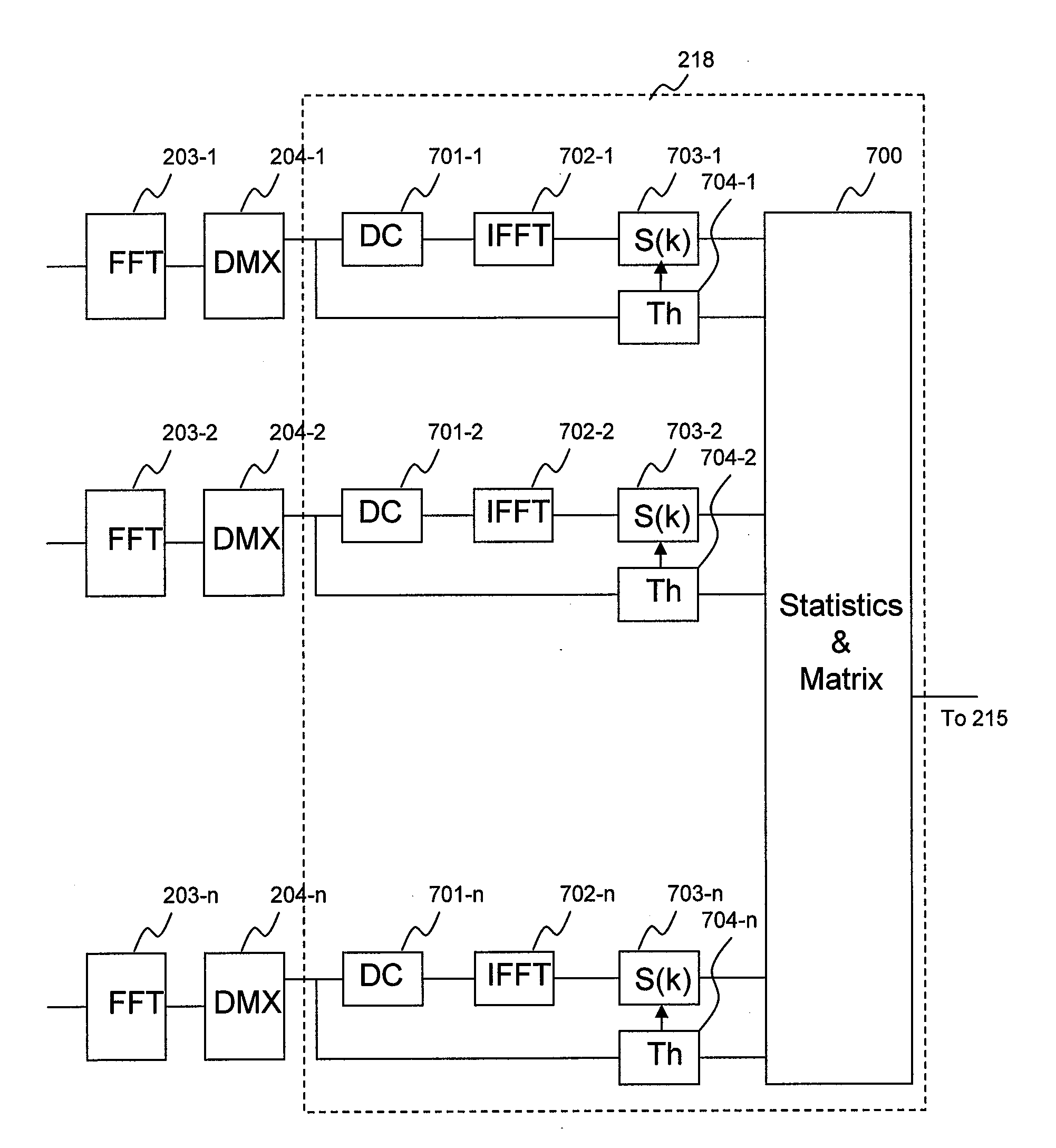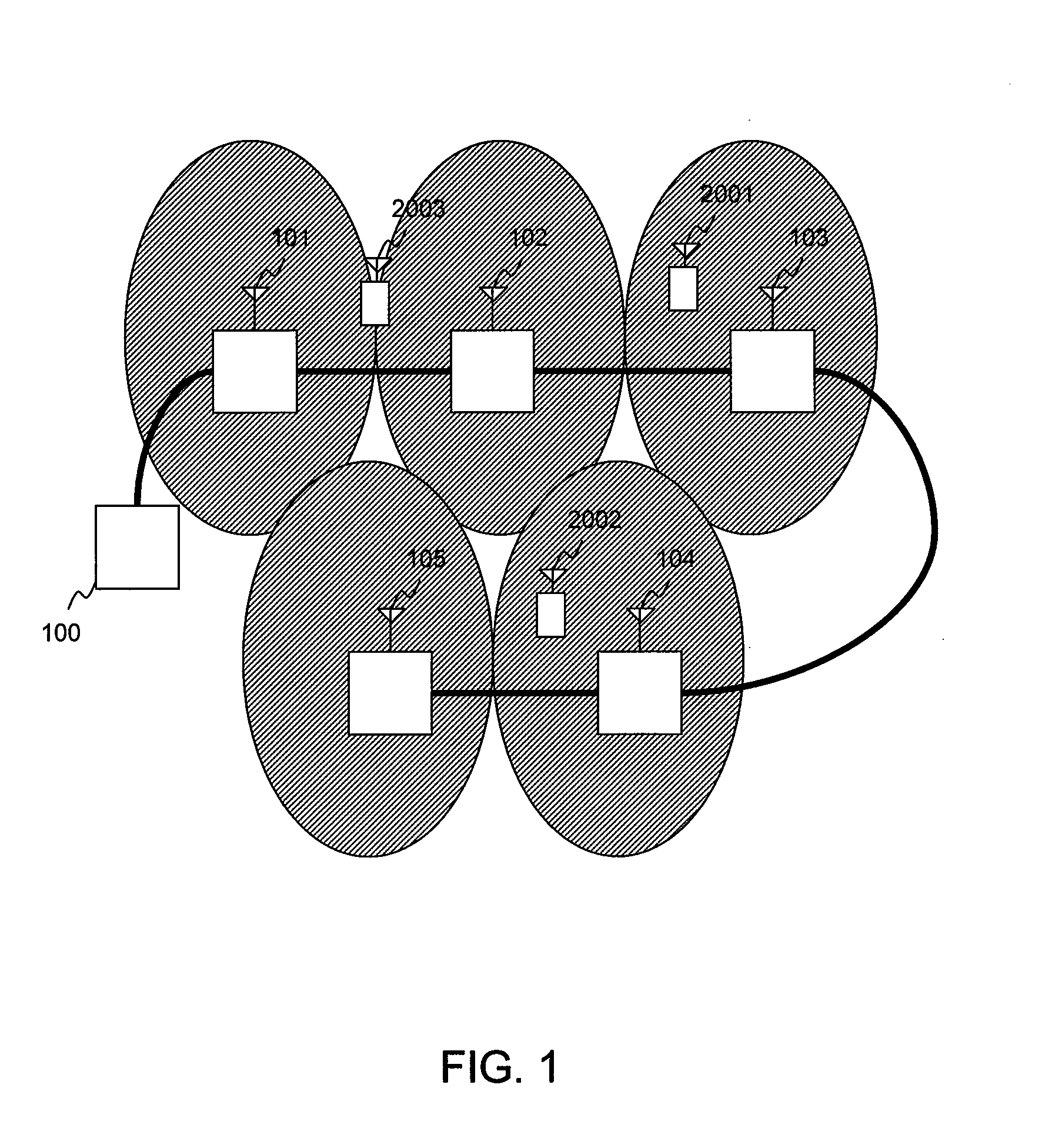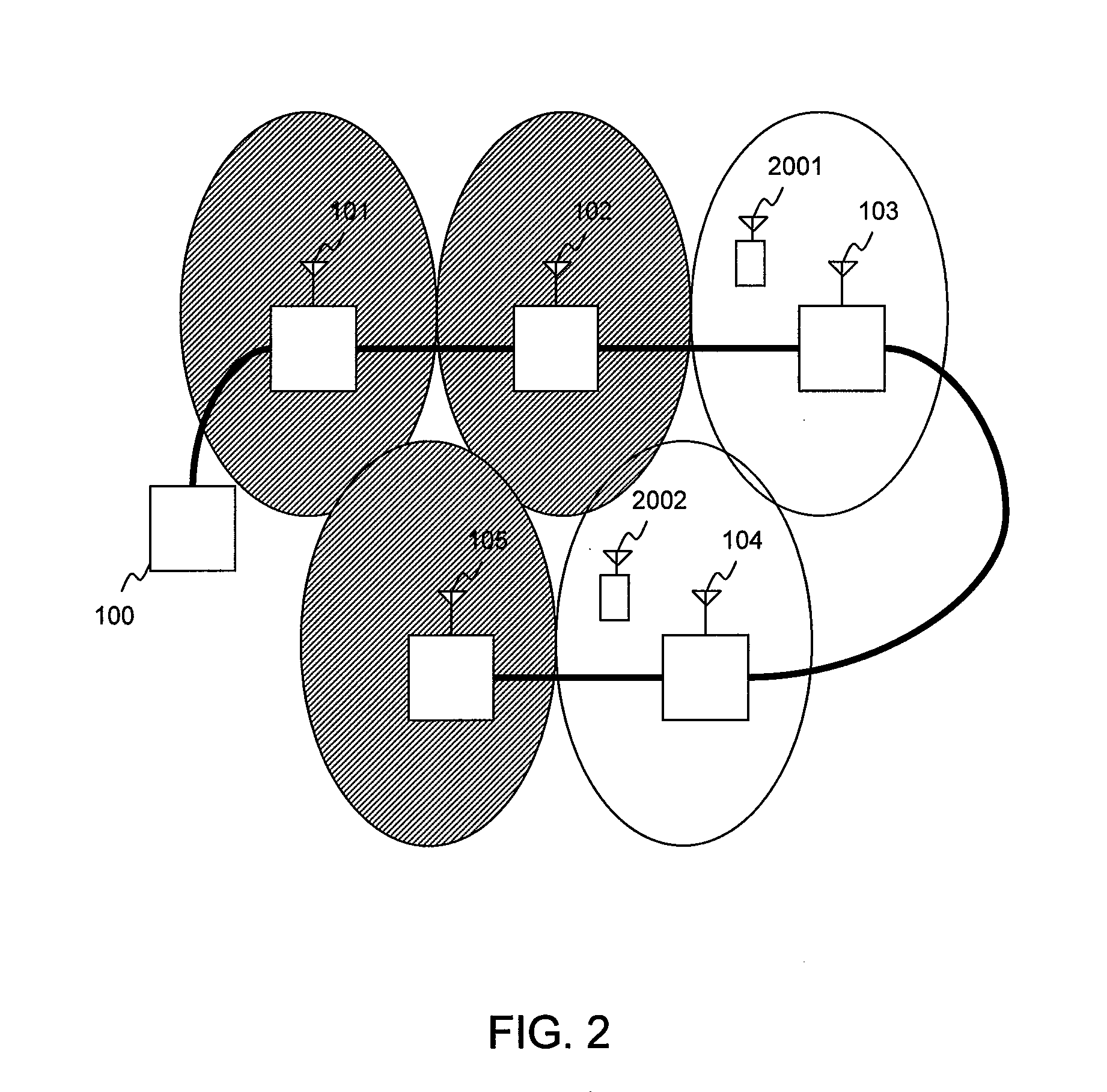Radio base station apparatus
a technology of base station and apparatus, which is applied in the direction of frequency-division multiplex, instrument, wireless commuication services, etc., can solve the problems of difficult to take some measures, high operation costs, and low flexibility, and achieve the effect of high flexibility and considerable efficiency
- Summary
- Abstract
- Description
- Claims
- Application Information
AI Technical Summary
Benefits of technology
Problems solved by technology
Method used
Image
Examples
example 1
[0124]The DSP 215 divides the remote radio units into a plurality of group candidates, based on the diagonal elements of the partial orthogonal matrix R′, and obtains the total traffic for each group candidate by adding the total of traffic on the control channel for one or more remote radio units included in each divided group candidate. The DSP 215 compares the obtained total traffic for each group candidate with a predetermined threshold, in which if the total traffic is greater than or equal to the threshold, the grouping is performed by further dividing the group candidate so that the total traffic may be smaller than the threshold.
example 2
[0125]The DSP 215 divides the remote radio units into a plurality of groups, based on the diagonal elements of the partial orthogonal matrix R′, and obtains the total traffic for each group by adding the total of traffic on the control channel for one or more remote radio units included in each divided group. Then, the DSP 215 compares the obtained total traffic for each group with a predetermined threshold. And the DSP 215 selects a certain group, and if the total traffic of that group is greater than or equal to the threshold, the grouping is performed by further dividing that group so that the total traffic may be smaller than the threshold. On the other hand, the DSP 215 selects a certain group, and if the total traffic of the group is smaller than the threshold, a new group is formed by adding further one or more groups, or one or more remote radio units to the selected group, and the grouping is performed so that the total traffic of the new group may be smaller than the thres...
example 3
[0126]The DSP 215 selects the remote radio units one by one in accordance with the sequence of rows or columns of the partial orthogonal matrix R′, successively adds them to the group, and obtains the total traffic for each group by adding the total Ti of traffic for one or more remote radio units within the group. The DSP 215 makes the grouping by adding the remote radio units to the group within the range where the total traffic does not exceed a predetermined threshold.
[0127]Referring to FIG. 11, the example 3 will be described below in more detail.
[0128]At step 805, the DSP 215 selects one remote radio unit corresponding to the upper left term of the correlation matrix (right view of FIG. 11C) after transformation of partial orthogonalization calculated at step 802, and obtains the traffic amount on the control channel for that remote radio unit from the expression 7. In the example of FIG. 11C, the remote radio unit 101 is selected. From FIG. 11B, it can be found that the traff...
PUM
 Login to View More
Login to View More Abstract
Description
Claims
Application Information
 Login to View More
Login to View More - R&D
- Intellectual Property
- Life Sciences
- Materials
- Tech Scout
- Unparalleled Data Quality
- Higher Quality Content
- 60% Fewer Hallucinations
Browse by: Latest US Patents, China's latest patents, Technical Efficacy Thesaurus, Application Domain, Technology Topic, Popular Technical Reports.
© 2025 PatSnap. All rights reserved.Legal|Privacy policy|Modern Slavery Act Transparency Statement|Sitemap|About US| Contact US: help@patsnap.com



